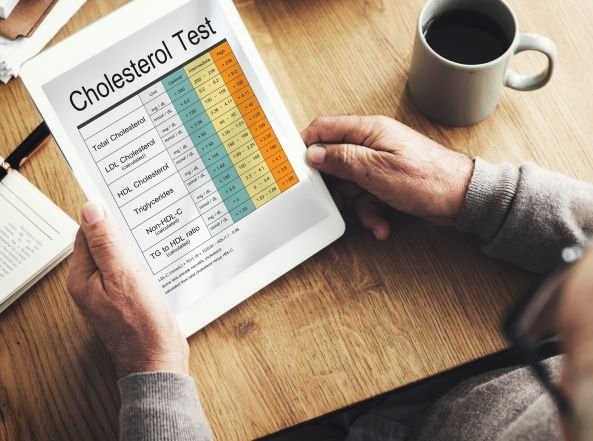The High Cholesterol Symptoms Your Feet Can Show You
September is National Cholesterol Education Month, so your Hamilton County and Boone County podiatrist, Dr. David Sullivan, wants to highlight the high cholesterol symptoms feet can show you. High cholesterol affects about 38% of all Americans, but symptoms may be subtle, or non-existent, until you’ve developed serious complications.
Detecting and treating high cholesterol is critical to better cardiovascular health. One way to do so is to go for regular cholesterol blood tests, but another key may be lying in your feet.
High Cholesterol Feet Warning Signs
According to experts, burning toe and foot pain—specifically at night—could be a warning sign of high cholesterol levels. This pain could indicate atherosclerosis, a build up of plaque that forms in your blood vessels, preventing blood from flowing freely. (Burning pain in your big toe could also be gout, especially if it wakes you up at night. But in this case, you would also notice redness, swelling and severe tenderness so you probably won’t confuse the two.)
Unlike the pain of everyday wear and tear, this high cholesterol warning sign found in the feet will burn or ache while you’re resting in bed. This is a sign that your extremities aren’t getting enough oxygen-rich blood. And it should send you to the doctor for an immediate cholesterol test and heart health exam.
Foot and Leg Pain? It Could Be PAD
When atherosclerosis first sets in, you may notice occasional foot and toe pain at night. But over time, this hardening of your blood vessels can develop into Peripheral Arterial Disease. (That’s when your extremities regularly lack sufficient blood flow.)
With PAD, you may develop leg cramps, especially when you walk or exercise. Other symptoms include changes to the appearance of your leg skin—it could look shiny, waxy, or blue in color. You may lose your leg hair, or it may grow much more slowly. Your feet may also be cool or cold to the touch.
Several factors can increase your risk for developing Pad. Everyone over age 50 is at a high risk of developing PAD and that risk is increased if you smoke, have diabetes, high blood pressure or high cholesterol. You are also at greater risk if you are African American. Individuals that have had, or have a family history of, heart disease, a heart attack or a stroke are also at greater risk.
Even if you don’t experience PAD symptoms, it’s important to regularly check your cholesterol levels and cardiovascular health. For healthy adults, you can space blood tests five years apart. But go more frequently if you have an elevated risk for cardiovascular disease, or if you’re experiencing the high cholesterol symptoms that your feet can show you.
Want to prevent problems before you start? First, keep your feet healthy with regular visits to our podiatry practice which provides quality foot and ankle care to residents of Westfield, Carmel, Zionsville, Noblesville and Fishers, IN. (That way, you’ll be able to tell the difference between regular foot pain and a heart condition.) Then, talk to your doctor about adopting a heart-healthy diet and exercise plan to help keep your cholesterol in check.


